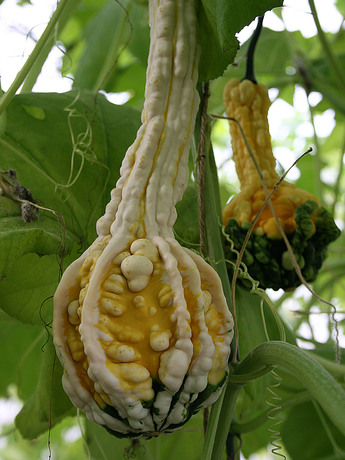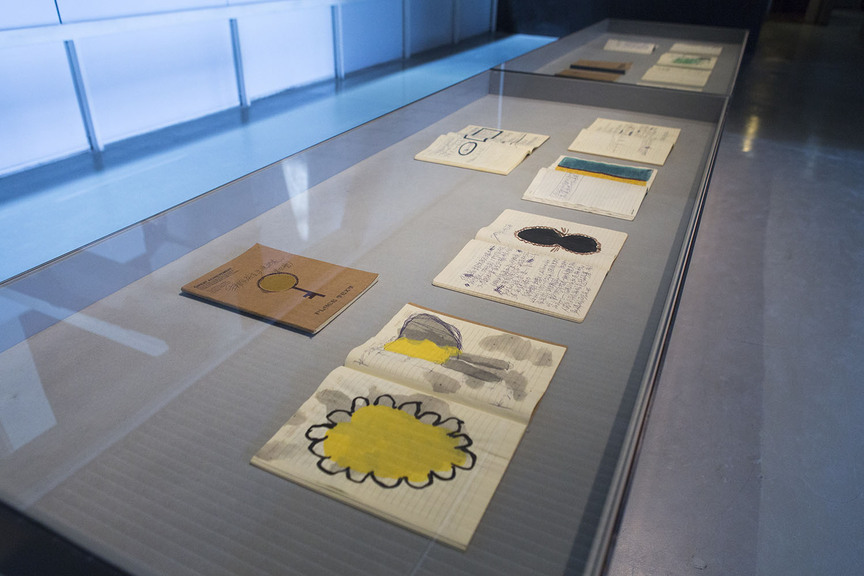-
From Current Issue
-
- Editor’s Letter Fire in the Heart
- Reviews I Gusti Ayu Kadek Murniasih
- Reviews 11th Seoul Mediacity Biennale: “One Escape at a Time”
- Dispatch Networked China
- One on One Monira Al Qadiri on Yukio Mishima
- Essays The rise of independent art spaces in pandemic-era Shanghai
- Features Tuan Andrew Nguyen
- Table of Contents
- Web Exclusives
- Archive
- Subscribe

R
E
V N
E
X
T
After seeing Li Shan’s exhibition at the Power Station of Art, I immediately wanted to run out and go find a copy of Franz Kafka’s novella The Metamorphosis: a story of a man who wakes up and finds himself transformed into a giant bug.
The now 75-year-old Li Shan—whose long and illustrious career dates back to the ’85 New Wave movement, by then already a renowned painter whose work was included in international exhibitions as well as in mainland China—turned his focus to science and biotechnology in the early 1990s. The result was Li’s establishment of a new and somewhat farfetched discipline: bio-art. Coming to the conclusion that Homo sapiens are in no way superior to any other organism—in fact, mankind being the most destructive creatures on Earth—Li believes, as the artist stated in a text for Australia’s White Rabbit Collection, “God’s work is unfinished,” thereby proposing that we splice our genes with those of other species to create new and better lifeforms, designed in partnership with bioscientists. Looking to enhance our perception of colors, for one, Li suggested that if he were to reengineer specific chromosomes and replace them with a dragonfly’s DNA, “maybe human eyes can be replaced by those of a dragonfly.”
A swarm of half-human, half-dragonfly sculptures titled Deviation (2017) was what viewers immediately encountered upon entering the museum’s atrium. As if in mid-flight, these hybrid sculptures, 60 of them in total, are startlingly life-like and life-size, cast from the artist’s own body. The mutated human torso features a double set of transparent wings and an insect head with bulbous, compound eyes. A white loincloth covered the sculpture’s genitalia, however, which apparently was required for the sake of public decency. Also located in the atrium were two large, multicolored wall charts, titled DNA Sequencing of a Dragonfly (2017). This seemed overly instructive but lacked sufficient explanatory information, as did nearly all of the works on view; unless you were a trained biologist or capable of reading genetic code, it didn’t mean much.
Detailed installation view of LI SHAN’s Smear 2, 2017, 1100 strains of corn, dimensions variable, at Power Station of Art, Shanghai, 2017. Courtesy the artist and Power Station of Art.
The first floor also included Li’s large installation work, Smear 2 (2017), consisting of 1100 potted stalks of corn. Upstairs was its companion piece of 1100 rice plants, titled Smear 1 (2017). Neither installation seemed to be thriving inside the museum; the corn looked brittle with no visible sign of bearing any sort of crop. The miniature rice paddies seemed to be doing a bit better, but whether it would survive the duration of the exhibition was anybody’s guess. Other works on the second floor included the short videos Misfortune 1 and Misfortune 2 (both 2011)—animated versions of the dragonfly-man, flying amid a blue, cloudless sky, accompanied by a somber soundtrack of Gregorian chanting monks—the sanctification of science being the oversimplified metaphor. Li’s Pumpkin Project (2007), one of the artist’s earliest experiments in bioengineering, was of course featured prominently in the show. With the help of a genetic laboratory—and after several failed attempts—Li had grown a new breed of gourd, albeit radically deformed and completely unappetizing in appearance. These were depicted in 33 color C-prints.
Also on the second floor in a gallery devoted to Li’s paintings were canvases from his “Reading Series” (1998–2012). Again, these feature transgenetic-species: men who have sprouted wings, or fish and butterflies augmented with human characteristics. For Li, genetic mutation is not only an isolated event that occurs in an evolutionary process, but is an opportunity to allow the DNA of a living organism to express itself freely, or to perhaps discover alternative possibilities. Although, other than as the artist’s surrealistic fantasies, it doesn’t seem that these alternatives will do the world any good.
The corridors of the second floor were covered in facsimile pages taken from the artist’s notebooks and sketches, comprising Reading Notes and Notes on BioArt Experiments, along with original drawings for biological experiments. It can be tricky when artists start dabbling in science, as so few do it with any plausibility or success. Robert Smithson, with his environmental art and interest in entropy, or Joseph Beuys, who once planted 7000 oak trees in the German city of Kassel as an act of ecological intervention to counterbalance urbanization, come to mind as being among the pioneers of art as a form of activism. Similarly, Li seems to be asking the big questions about the challenges facing humanity, its survival, and the dead-end of planetary extinction. Though Li proposes that we explore the larger possibilities for life as well as for art, beginning under a microscope, his work takes on only the fun stuff of horror films and science fiction, and is entertaining, at best.
Li Shan’s exhibition is on view at the Power Station of Art, Shanghai, until November 26, 2017.
To read more of ArtAsiaPacific’s articles, visit our Digital Library.










